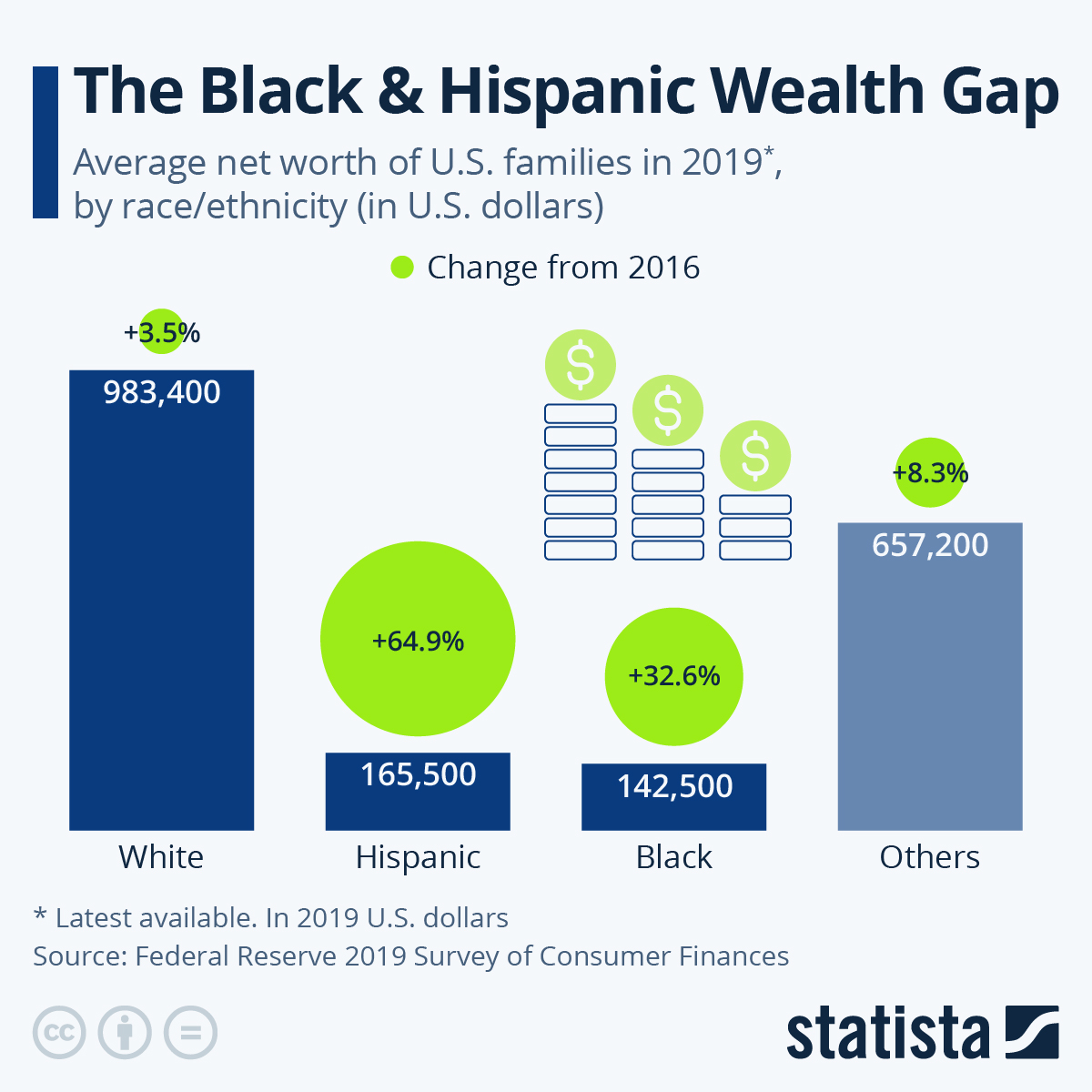The Federal Reserve’s Survey of Consumer Finances shows the staggering wealth gap between white Americans and African-Americans as well as the country’s Hispanic population. In 2019, the latest year for which data is available, the average white family in the U.S. had a net worth of almost $1 million, while the mean net worth of Black American families was only $142,500. For Hispanics, this number stood at 165,500. Looking at median net worths, white U.S. households could fall back on a net worth of $188,200, while that number was just $24,100 for Black families and $36,100 for Hispanic ones.
Black wealth has grown faster than white wealth recently, if not as fast as the slightly higher Hispanic wealth. However, it also fell more in the aftermath of the Great Recession. While between the survey years of 2007 and 2010, U.S. net worths suffered similarly across race and ethnic categories, with was between 2010 and 2013 that Black wealth in the U.S. took another hit of -23 percent, while white wealth grew again slightly by 1.4 percent. Hispanic wealth also decreased another time by almost 21 percent between the two years. The survey also shows that 54 percent of white families with members over the age of 55 had at least one retirement account, while that number was just 29 percent for Black and 21 percent for Hispanic families.
These massive wealth gaps have been identified by researchers as caused in large parts by differences in generational wealth. While factors positive for building wealth – like obtaining a college degree – benefit all races and ethnicities, wealth gaps persist among equally educated members of different races since some of them are more likely to also inherit wealth in the form of money, financial products or properties. The St. Louis Fed concludes that for Black Americans, the roots of wealth inequality can be traced back to slavery, as its history and aftermath held Black Americans back from building wealth. Aspects of this lack of Black generational wealth are historical barriers to land and home ownership, for example due to the practices of sharecropping and redlining, restricted access to education during segregation and restricted access to credit, for example through the discriminatory GI bill of 1944.





















